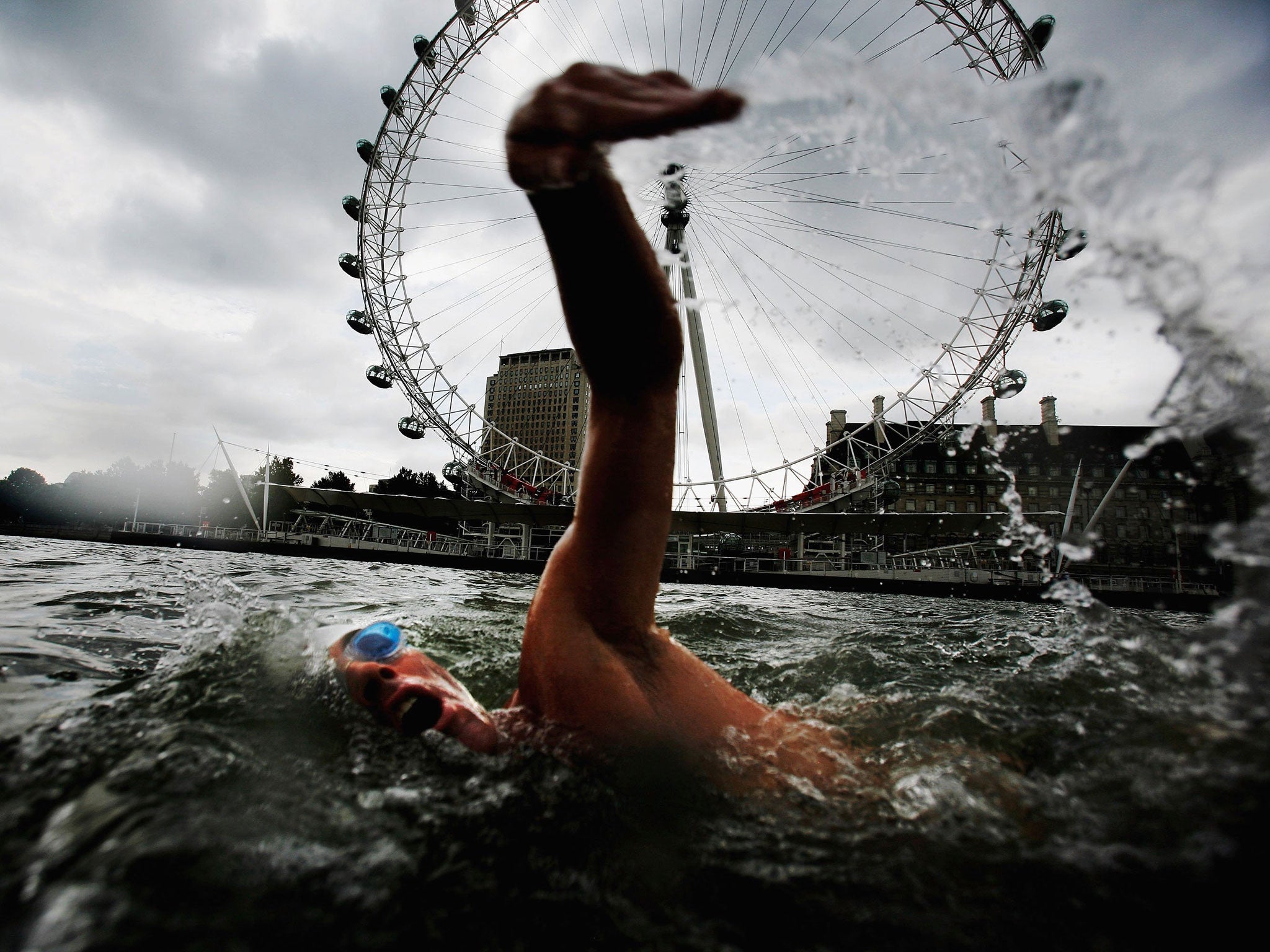DownStream: A History and Celebration of Swimming the River Thames by Caitlin Davies, book review
These remarkable stories of swimming in the Thames offer a watery take on history

Your support helps us to tell the story
From reproductive rights to climate change to Big Tech, The Independent is on the ground when the story is developing. Whether it's investigating the financials of Elon Musk's pro-Trump PAC or producing our latest documentary, 'The A Word', which shines a light on the American women fighting for reproductive rights, we know how important it is to parse out the facts from the messaging.
At such a critical moment in US history, we need reporters on the ground. Your donation allows us to keep sending journalists to speak to both sides of the story.
The Independent is trusted by Americans across the entire political spectrum. And unlike many other quality news outlets, we choose not to lock Americans out of our reporting and analysis with paywalls. We believe quality journalism should be available to everyone, paid for by those who can afford it.
Your support makes all the difference.What do Byron, Swift, Benjamin Franklin, David Walliams, and 14-year-old Agnes Beckwith have in common? They have all completed an endurance swim of the Thames.
When Walliams swam 140 miles of the river for charity in 2011, it made world headlines. But many equally brave and original swimmers have also taken the plunge – from international sportsmen to intrepid wild swimmers and hardy amateurs.
Magical, dirty, often dangerous, it is clear the Thames has always exerted a huge emotional pull on the national psyche. It has been a highway, a boundary, a food store, a playground, and, poignantly, a graveyard for centuries.
Caitlin Davies, the writer daughter of Hunter Davies and Margaret Forster, charts 400 years of bathing in the river – following the 215-mile journey of the Thames from its source in Gloucestershire, via the posh boating territories of Oxford and Eton, through Shiplake and Margrave (where actress Margaret Rutherford once taught a young Antony Worrall Thompson to swim); and on down to Westminster, London Bridge; and finally through Southend to the Crowstone obelisk, which marks the official end of the Thames.
Davies (whose previous non-fiction book was Taking the Waters: A Swim Around Hampstead Heath) offers us a fascinating cultural history of swimming. The Victorian era saw the birth of organised river racing, with the launch of the amateur long-distance championships of Great Britain, but we also we see the rise of bathing houses, floating baths and lidos for ordinary workers. Beaches are created at the Tower of London and Greenwich. Bridges along the route create endless opportunities for diving and mudlarking.
At first women swimmers are treated as second-class citizens –barred from pools and clubs. But extraordinary stories emerge. As Davies writes: "Women didn't have the vote, they were still seen as the weaker sex – physically and mentally – and yet here they were swimming for hours over long distances in the Thames."
Agnes Beckwith completed numerous record-breaking swims in the Thames, beginning in 1875 when, aged 14, she dived from a boat at London Bridge and swam five miles to Greenwich. She later formed her own "talented troupe of lady swimmers" and travelled the globe, billed as "the premier lady swimmer of the world". While London typist Mercedes Gleitze became the first British woman to swim the Channel in 1927, after training for her historic swim in the Thames.
The book is shot through with literary references (Davies shows how the Thames is a major character in books such as Three Men in a Boat, Tales of the Riverbank and Our Mutual Friend), as well as exploring fashions in costume and dress, with many previously unseen archive images. Victorian propriety meant men who swam naked were pressured to wear drawers (in 1870 Windsor Baths was moved because Queen Victoria had an eyeful of half-naked men when she looked out of her castle windows); while women were encumbered with corsets and sleeves and hats until Annette Kellerman, the Australian champion swimmer and later Hollywood star, revolutionised swimming for women by designing the first one-piece costume in 1907.
We learn how the Thames has long been a site of political protest – from Gleitze, who swam to highlight the condition of the urban poor, to Labour politician John Prestcott who swam in the river in 1983 to protest against the government dumping nuclear waste at sea. And famously, in 2012, Australian Trenton Oldfield interrupted the Boat Race down the Thames to demonstrate against government cuts.
Downstream is a remarkable, sometimes overwhelming research project. But the larger-than-life characters shine through, from Kellerman, who wore leg braces until she was seven, to Jules Gautier (a 19th-century escapologist in the mould of David Blaine) who swam the Thames manacled.
So why don't we know more about these hardy individuals whose epic swims featured on the front pages of newspapers in their day? Davies cites 1957 as a key year when the river was declared "biologically dead" and organised racing was largely over, with people migrating to chlorinated indoor pools. In many ways we lost our heritage of open-water swimming.
But hearteningly, record numbers are now being drawn back to wild swimming and mass racing events on the Thames. If plans for a floating lido at Blackfriars succeed, history will have come full-circle in a rather wonderful way.
Join our commenting forum
Join thought-provoking conversations, follow other Independent readers and see their replies
Comments